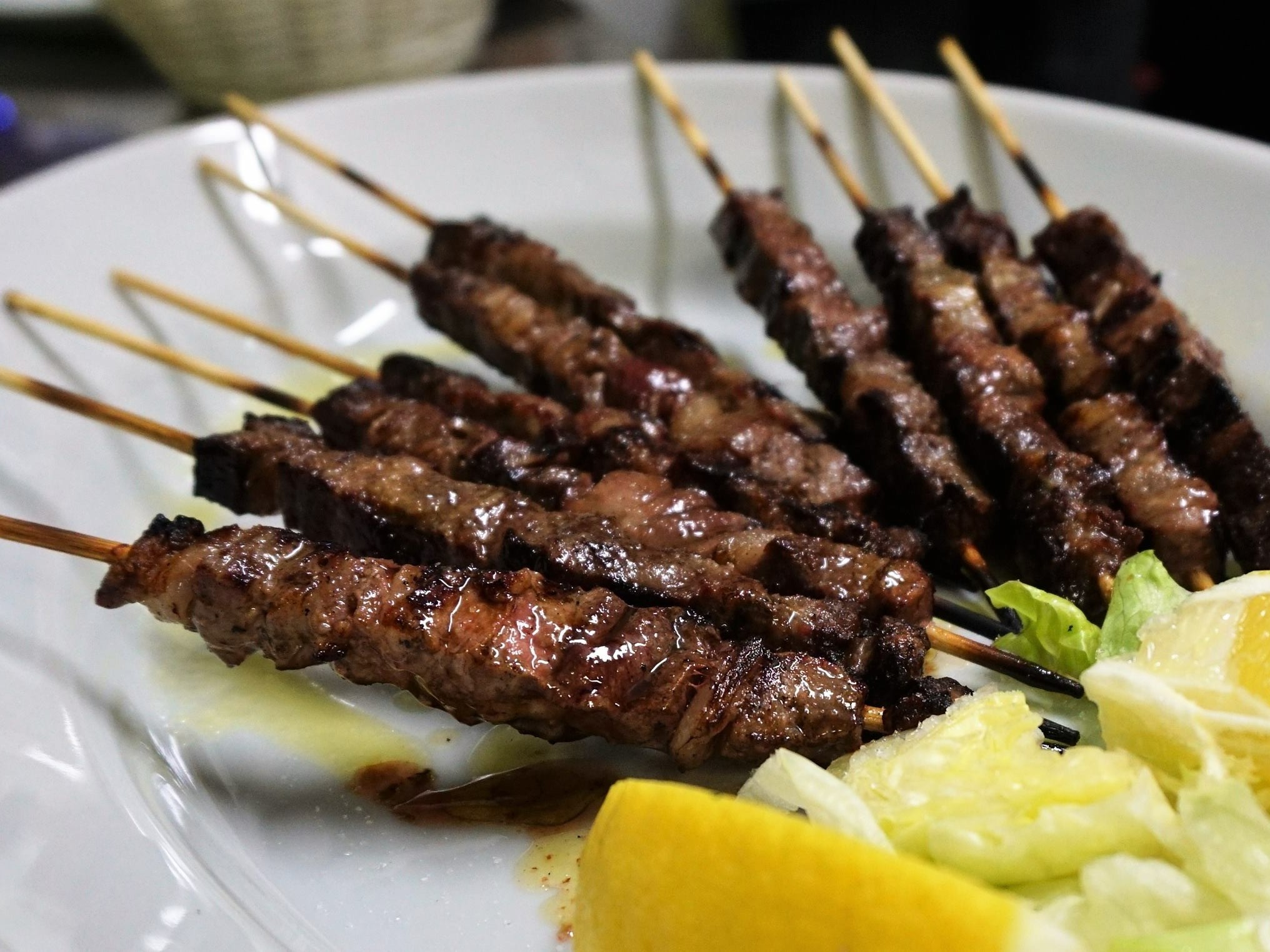
Arrosticini (also known as rustelle or arrustelle in the local dialects) are a typical dish from Abruzzo. They consist of skewers made from small cubes of lamb meat, 1-2 cm on each side, seasoned with a pinch of salt and grilled over an open flame on a rustellara, a special long and narrow grill designed to cook them over the fire while preserving the wooden part of the skewer, which would otherwise burn.
The traditional recipe calls for cooking them on a barbecue, but they can also be cooked on a grill in a kitchen, provided it is very hot. The meat, once cut into evenly-sized cubes, is stacked 8 pieces at a time onto a skewer about 8 inches long. It is then drizzled with a bit of olive oil and some rosemary sprigs and grilled on a hot plate.
The result is a simple yet delicious dish, typically served with rustic bread and a good glass of red wine -preferably a Montepulciano d'Abruzzo if you want an authentic taste of the region. For a more traditional version, the skewers can be grilled directly on a grill, seasoned only with a pinch of salt.
True arrosticini are made with meat from a castrato (a castrated sheep) or ciavarra, a local dialect term for a young female sheep that has never given birth. Handcrafted arrosticini, made manually, have a more irregular appearance than those sold in supermarkets, which are recognizable by their clean, precise cuts. However, the handcrafted ones taste significantly better because the cubes are carefully selected one by one, alternating between fatty and lean parts of the animal. Depending on whether they are made industrially or artisanally, the weight of each piece varies between 20 and 35 grams. On average, 10 to 15 arrosticini are served per person.
So, what are the origins of arrosticini? There are several historical versions, often conflicting, that attribute the invention of this delicious dish to two provinces in Abruzzo: Pescara and Teramo. It is believed that the shepherds of the Gran Sasso mountains and surrounding valleys "invented" arrosticini in the 1930s by cutting lamb meat into small cubes to avoid wasting food, including parts near the bones, alternating them with bits of fat to enhance the flavor. The small pieces of meat were then turned into skewers by threading them onto sticks made from vingh, a plant that grows along the banks of the Pescara River.
In any case, arrosticini can be found throughout the region, including in Chieti and L'Aquila, and have become so popular that they were included in the list of Italian Traditional Agri-food Products, a recognition of their historical and cultural value. The story of arrosticini also speaks to the deep connection the people of Abruzzo have with their land and local traditions. Preparing and eating arrosticini is often a communal activity, bringing friends and families together around a fire, outdoors or during local festivals. Arrosticini are easily prepared anywhere and are therefore often considered street food. They are typically eaten by pulling each piece of meat off the skewer with your teeth, drawing the wooden stick out as you go.
Over time, many variations have been developed, using different types of meat and preparation methods. This is possible because there is no protected designation of origin for arrosticini. You can find arrosticini made from pork, beef, liver, or chicken, seasoned with a variety of herbs and spices, both mild and spicy, such as truffle oil, onion, bay leaves, and grilled vegetables like zucchini, eggplant, and peppers.






